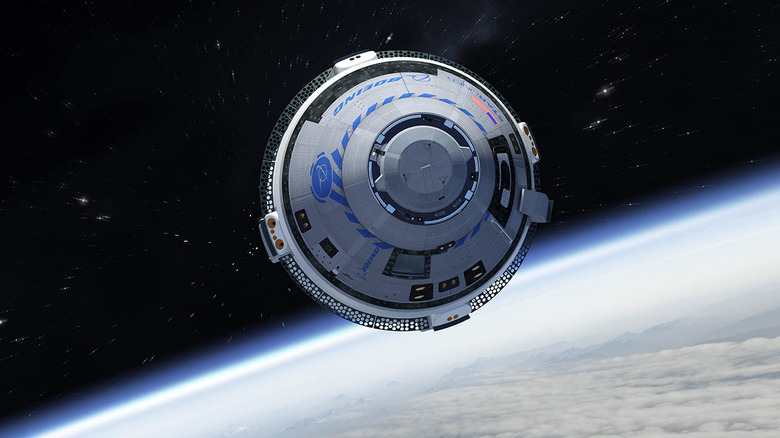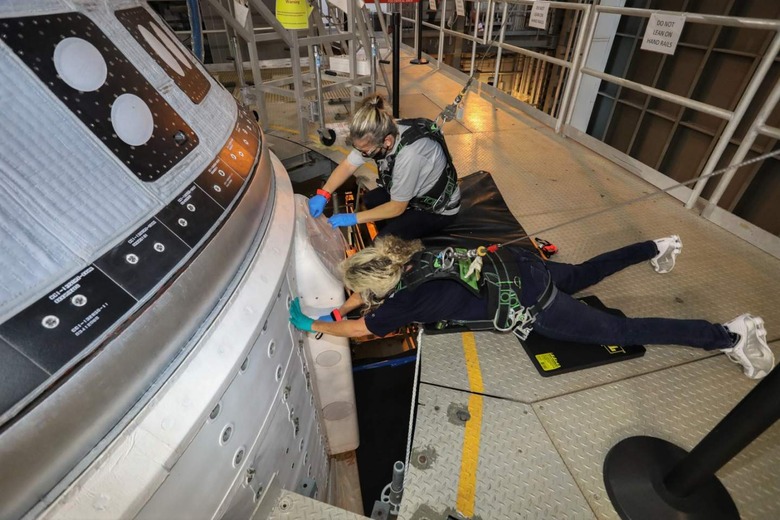Boeing's Latest Starliner Glitch Sounds More Serious Than First Reported
Boeing's Starliner issues last week were more serious than most believed, it's been revealed today, with numerous valve failures in the propulsion system forcing NASA to scrub the launch. Starliner, which Boeing hopes one day will fly NASA astronauts to the International Space Station, has struggled through numerous setbacks over the past few years, though the aerospace firm had hoped to put that behind it with a successful OFT-2 mission.
Initially, the Orbital Flight Test-2 launch was scheduled for the end of July, but problems at the International Space Station scuppered that. The orbiting research platform was nudged off its planned course, when rockets on the freshly-arrived Russian science module lit up unexpectedly.
Boeing and NASA rescheduled OFT-2 for a few days later, but on August 3 a new glitch forced that to be scrubbed too. Eventually, it was decided to bring Starliner – and the United Launch Alliance rocket it sat atop – back inside for further analysis. Boeing said late last week that it had secured the Starliner and Atlas V in the Vertical Integration Facility at Space Launch Complex-41, and would be working on a valve issue that had been spotted "early in the launch countdown" back on Tuesday.
"Yesterday," Boeing said on Friday, August 6, "teams powered up the spacecraft to receive data and send commands to the propulsion system valves that unexpectedly indicated "closed" positions early in the launch countdown on Tuesday. The transmitted commands successfully opened some of the valves, giving the team new data to assess while also beginning physical inspections."

Today, though, in a mission update, Boeing revealed that the valve issue had been more widespread and significant than many assumed from the original post. Over the weekend, the company confirmed, it had "restored functionality on more of the 13 CST-100 Starliner propulsion system valves that did not open as designed during prelaunch system checks last week."
The valves do not show damage or signs of external corrosion, Boeing added, and its engineers "are now applying mechanical, electrical and thermal techniques to prompt the valves open." So far, 7 out of the 13 are operating as intended.
"The valves connect to thrusters that enable abort and in-orbit maneuvering," NASA explains. "If all valve functionality can be restored and root cause identified, NASA will work with Boeing to determine a path to flight for the important uncrewed mission to the space station."

The hope, Boeing says, is to figure things out and then get Starliner ready for another launch attempt before August is through. Nonetheless, it's an ominous incident for a project that has given NASA headaches in the past. After Starliner failed to reach the ISS in an uncrewed flight back in December 2019, the US space agency launched an investigation into the project as a whole.
That concluded in mid-2020, and Boeing has been working on various fixes and changes in the intervening months. Meanwhile, SpaceX continues to operate its Dragon spacecraft, and is already running crewed missions to and from the ISS. Even had OFT-2 gone smoothly earlier in August, Boeing wasn't expected to begin crewed mission flights until sometime in 2022 at the earliest.
